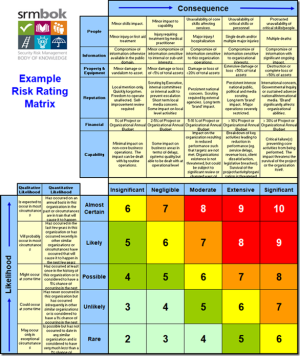Originally posted on July 1, 2019 @ 6:06 PM
We all use metaphors in how we speak and communicate to each other. Metaphor is poetic language that requires imagination to understand how a bridge is created for understanding. A metaphor is a mechanism that uses an image to convey meaning about something else (https://en.wikipedia.org/wiki/Metaphor ).
Essentially a metaphor is a paradox, we try to create meaning and understanding by using an indirectly trope/part of speech that says something ‘is like’ something else. Sometimes metaphor is communicated verbally, textually and visually (often in models). I have written before how the safety industry is represented metaphorically by mechanistic representations (https://safetyrisk.net/the-iconography-of-safety/ ; https://safetyrisk.net/safety-icons-and-communicating-to-the-unconscious/ ). How fascinating that we represent what people do about risk with objects such as cones, glasses, boots, gloves, mechanical models and hi-viz? How bizarre that in an industry that is primarily about helping and educating people that we seek metaphors about objects to create meaning.
When we want to communicate across disciplines we use metaphor to connect. Metaphors provide word pictures that use imagination to provide ‘insight’ into something. The effectiveness of certain metaphors is determined by one’s ability to imagine. Imagination, creativity and discovery is risky because imagination demands leaving the security of what one knows for the unknown of something else. Metaphor provides untranslatable information in an effort to communicate about something else.
Metaphor is the key to boundary crossing between disciplines. Unfortunately, the mechanistic STEM disciplines don’t study or understand metaphor nor know how it affects the collective unconscious. And so many of the metaphors used in the industry are counter productive and destructive. Unfortunately there is not enough space to tackle them all so will simply have a look at two popular metaphors in the industry:
Reason’s Swiss Cheese
There has been perhaps no more misleading metaphor in the industry than Reason’s Swiss cheese (https://en.wikipedia.org/wiki/Swiss_cheese_model ). In an industry seeking a mechanistic answer to the complexities of risk, this metaphor seems to give an answer. Except, it doesn’t.
All the Swiss cheese does is satisfy the assumption that events and causes are linear and simple. The opposite is the case. Risk is complex, wicked (https://www.aihs.org.au/news-and-publications/news/safety-%E2%80%93-wicked-problem-report-released) and intractable. The only way to diminish risk is to also diminish learning. Risk is a wicked problem because it creates this paradox with learning. The only way to tackle fallibility is to embrace it.
In reality if one wants to understand the way risk emerges the better metaphor using swiss cheese might look like this.
Unfortunately many of the incident investigation packages on the market don’t understand risk or emergence (https://en.wikipedia.org/wiki/Emergence) and so basically make up causality to suit their behaviourist assumptions.
The SEEK program we deliver (https://cllr.com.au/product/seek-the-social-psyvhology-of-event-investigations-unit-2/) tackles many of the myths in populist incident investigations.
Bow-Tie
The bow tie is another linear model/metaphor of incident causation. Again, its popularity is linked to the reductionist ideologies that plague the industry. The model includes no aspect of consideration for social psychological factors. The bow tie is a metaphor/model that makes it seem like prevention and outcome is simple. It is the perfect model to satisfy behaviourist ideology. Everything is modeled as inputs and outputs with the critical event in the middle.
The emphasis in the bow tie is on controls not people or context and runs from left to right in a nice neat order. This is repeated over and over in the SRMBoK (http://31000risk.blogspot.com/2012/05/another-view-of-risk-management.html). You can even buy bowtie software (https://www.cgerisk.com/products/bowtiexp/) to help shape your linear, behaviourist and reductionist assumptions, neat and tidy. How wonderful.
The trouble is many of these metaphors, symbols, icons, models and accepted in the risk industry simply prove the assumptions of the designer. Then make sure the checklist matches the same and bingo there is your risk assessment, causation map, causality trajectory and explanation all in one.
Other Metaphors and Models
When we teach the SEEK program we introduce a number of tools to help with incident investigation one of which is causal-loop-mapping. I have discussed the holes in many aspects of popular incident investigations previously here: https://safetyrisk.net/the-seek-investigations-donut/.
Even then causal loop mapping is only intended as a guide but at least it gets the investigator away from the linear nonsense that plagues the industry. A causal-loop map looks something like this:
This map is from a discussion about concussion/traumatic brain injury (https://www.frontiersin.org/articles/10.3389/fneur.2018.00203/full) and demonstrates the complexity of how incident ‘emerge’ chaotically. You can read more about causal loop mapping here (https://www.isixsigma.com/tools-templates/cause-effect/causal-loop-diagrams-little-known-analytical-tool/). This is only one of the tools we explore in SEEK to help move away from unhelpful models and metaphors in investigations.
It is an absurdity to think that fallible humans undertake tasks in a predictable linear way. Any sense of understanding history demonstrates that human life is random, unpredictable and messy. The delusion of predictive analytics and Bradley Curves (https://safetyrisk.net/sexy-curves-and-the-paradox-of-risk/) ignore all the research into: human emotions, feelings, interaffectivity, interconnectivity, social influence, social psychological pressures, contextual influence and the lived ecology. We now know that a butterfly disaster in Brazil can affect milk production in Victoria. This is a fundamental element of emergence and chaos theory (https://academic.oup.com/sw/article-abstract/43/4/357/1884957).
So metaphors matter. They only represent the ideological assumptions of the designer. Metaphors are not objective nor neutral and create alignment to the designers ideology not a broad trans-disciplinary sense of knowing. The risk industry needs much better more human model for understanding risk than those that currently dominate the curriculum.





Drew says
What is the purpose of using a metaphor (or at least a naming convention) of a ‘donut’ to describe your causal loop map?
What do you see as the value add in this instance?
Rob Long says
Hi Drew, I sent an email.
bernardcorden says
Dear Rob,
I’ve never tried Rhizome cheese.
Rob Long says
Blue vein is best